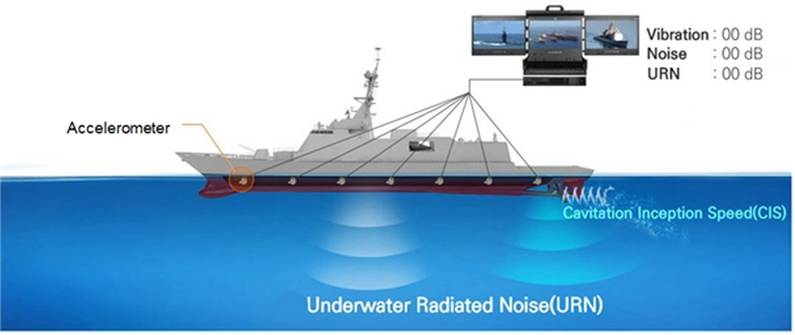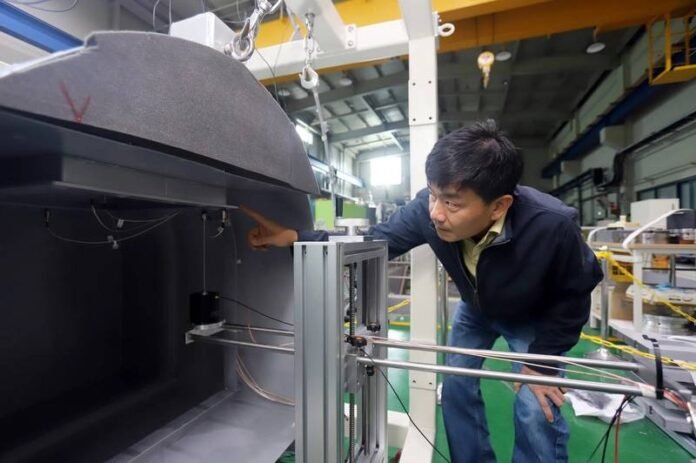Researchers in South Korea at the Korea Institute of Machinery and Materials (KIMM) have reportedly developed a hull-attached sensor-based system for predicting underwater radiated noise (URN), a key factor in naval stealth operations.
The new technology allows real-time monitoring of underwater noise levels generated by naval vessels, enabling early detection of abnormal vibrations and improving operational efficiency while reducing maintenance costs.
The research team, led by Principal Researcher Seong-Hyun Lee at the Virtual Engineering Research Center of the Korea Institute of Machinery and Materials, under the National Research Council of Science and Technology, successfully validated the system through full-scale trials on multiple naval ships. The team developed a proprietary algorithm and sensor placement technology that accurately monitors and predicts both hull vibration and underwater noise using empirical data gathered during vessel operation.
- “This world-class system enables real-time prediction and monitoring of strategically sensitive underwater noise data,” said Principal Researcher Seong-Hyun Lee of KIMM. “It not only strengthens naval stealth capabilities but also enhances early fault detection and maintenance efficiency across diverse naval operations.”
Unlike conventional URN analysis methods, which require intermittent data collection using external equipment in quiet sea areas free from surrounding ship traffic, the new system enables continuous onboard monitoring with real-time updates. Even with a limited number of sensors, the optimized sensor placement and advanced signal processing techniques allow the system to maintain high prediction accuracy, achieving a margin of error within 4 decibels during real-world tests.
The algorithm processes real-time data from accelerometers attached to the vessel’s hull, analyzing vibration characteristics, radiation efficiency, and frequency profiles to calculate underwater radiated noise levels. In addition, a statistical anomaly detection algorithm allows early identification of abnormal vibration patterns, while adaptable threshold settings accommodate various operational conditions.
This real-time capability offers advantages for stealth operations, particularly in detecting changes caused by cavitation or shifts in propulsion modes.
Beyond its military applications, the system also offers significant benefits for maintenance management, with flexible integration into diverse ship designs and operations. The sensor configuration helps lower installation and operating costs while improving over-all fleet management.
The research team further validated the technology by collecting vibration data from hull-mounted sensors during varying operational conditions, including speed changes. Testing was conducted following international standards for underwater noise measurement (ISO 17208-1:2016), with real-world results showing prediction errors consistently within 4 dB.
The project was conducted jointly with defense contractor LIG Nex1 and was supported by the Defense Acquisition Program Administration and the Defense Rapid Acquisition Technology Research Institute under the project titled “Hull-Attached Sensor-Based Monitoring Technology for Naval Propulsion Systems.” Schematic diagram of the underwater noise prediction algorithm.
Schematic diagram of the underwater noise prediction algorithm.
Image Credit: Korea Institute of Machinery and Materials (KIMM)






